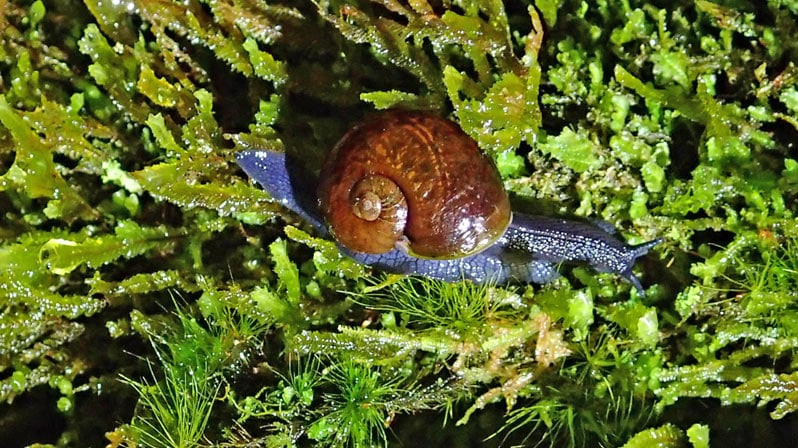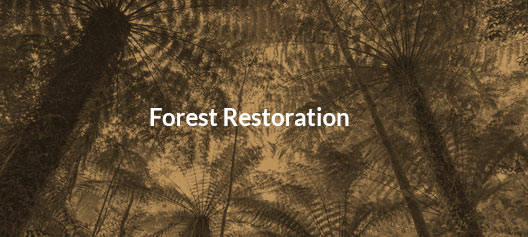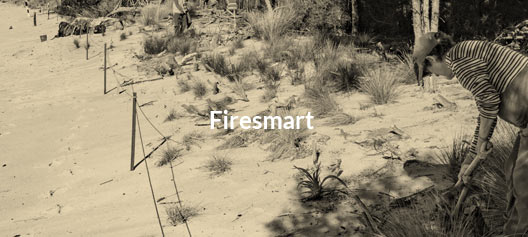WILDLIFE RESTORATION
RESTORING WILDLIFE FOREST RESTORATION FIRESMART
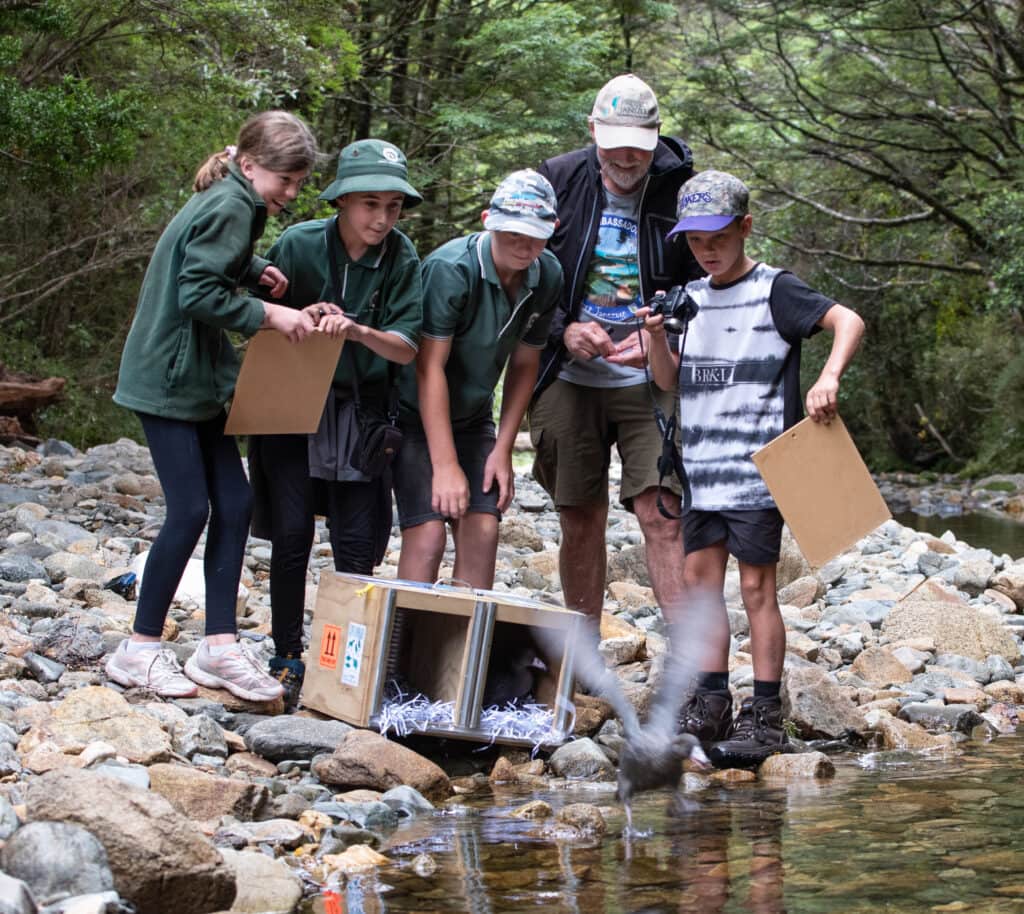
Project Janszoon and its partners began releasing native birds back into the Abel Tasman in 2014. The survival of birds like kākā, kākāriki and pāteke/brown teal is the true test of predator control.
As kaitaki or guardians local iwi play an important role in returning manu (birds) to the park. The manu are blessed, thereby anchoring them to the whanau, hapu and iwi of the area, with the birds welcomed back as taonga or treasure.
As we reduce the numbers of rats, stoats and possums we expect to expand the range of birds already in the park like toutouwai/robin, titipounamu/rifleman and ngirungiru/tomtit from the higher reaches of the park to the coast via predator free corridors. In the future, we hope to return species like whio/blue duck and ultimately mohua to the mainland and tuatara to Tonga Island.
Image: Students from Lower Moutere School helping release whio at Wainui Hut, February 2023 ©Ruth Bollongino, Fern Photos





BIRDS

Kākāriki / Yellow Crowned Parakeet
The first kākāriki were released from the purpose built aviary at Wainui Hut in 2014. Walkers now report hearing the noisy parrots chattering in the upper reaches of the Park.
Four aviaries in Nelson and Marlborough breed the yellow crowned parakeet on behalf of Project Janszoon. You can view the colourful birds destined for the Abel Tasman at Natureland Wildlife Trust in Nelson, Lochmara Lodge Wildlife Recovery and Arts Centre in Queen Charlotte Sound, Ecoworld Aquarium, Picton and Tui Nature Reserve in the Marlborough Sounds.
Learn more about Kākāriki
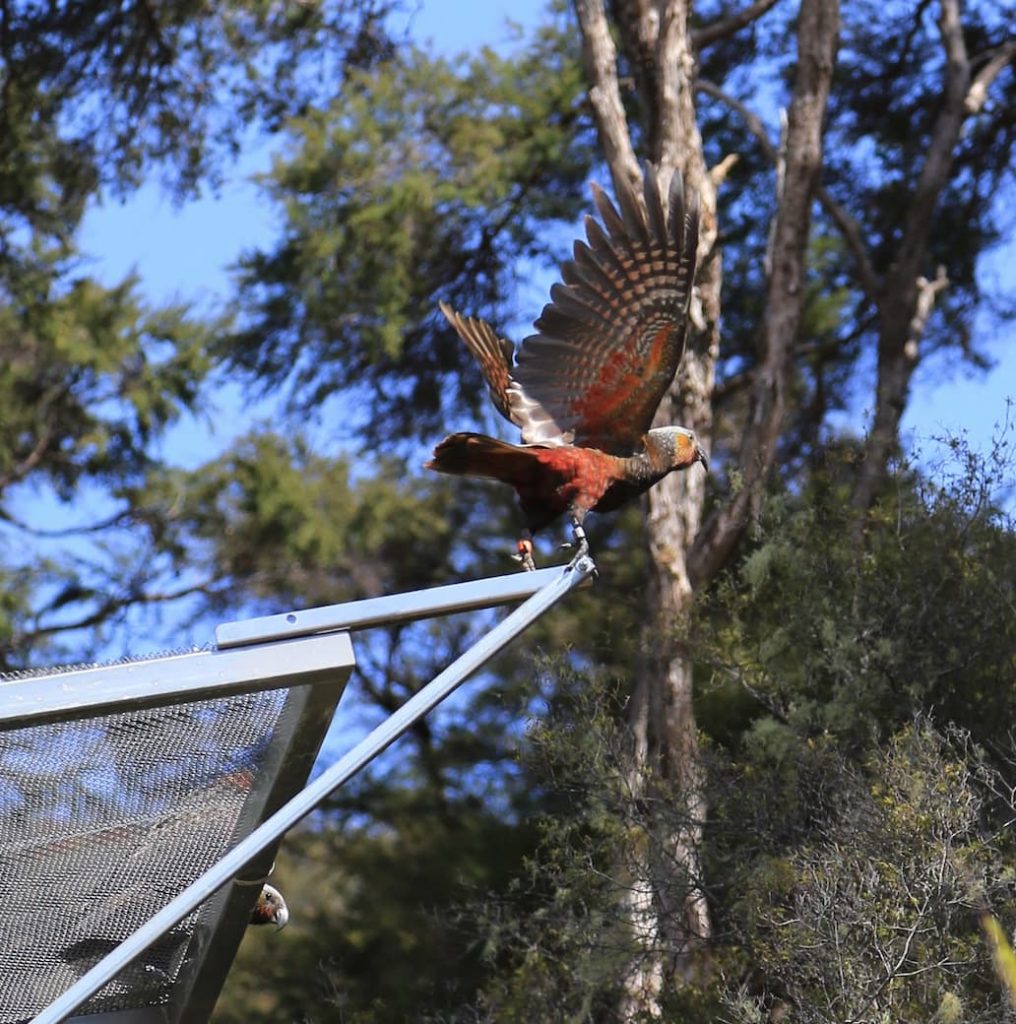
Kākā
Captive bred kākā were first released into the Abel Tasman in 2015. At the time a few wild male kākā were believed to still be present in the Park but the females were typically killed by predators while on the nest so they were considered to be functionally extinct in the park.
The kākā population had another boost in spring 2019 when released 24 at Bark Bay/Wairima on the Abel Tasman Coast. Some of these birds were taken as eggs or chicks from wild nests in the Nelson Lakes or Kahurangi National Parks and hand raised in captivity.
In total, we’ve released 35 of these entertaining forest parrots into the park. The population is intensively monitored and we’ve seen successful breeding increasing as the population establishes.
Seeing kākā on the coast of the Abel Tasman is evidence the work of Project Janszoon, DOC and our partners is having a significant effect on biodiversity in the Abel Tasman. (photo Ali Kimber)
Learn more about Kākā

Kākā Breeding Programme
Imagine walking in the Abel Tasman and coming across a kākā. Having a thriving population of this charismatic bird in the forests is a priority for the project, however there are limited options for sourcing birds with Top of the South genetics.
In 2016, three male kākā were taken from wild nests in Nelson Lakes. They were introduced to four northern south island kākā at Nelson’s Natureland Wildlife Trust in 2017 as part of a captive breeding programme. It is hoped the birds will breed with their progeny released into the Abel Tasman.
The wild population will also be boosted by harvesting chicks and eggs from Nelson Lakes and Kahurangi National Park. Kākā only breed in a mast year in beech forest so in 2019 over 20 eggs were harvested and are currently being raised in breeding facilities around New Zealand. These juvenile birds will be released on the coast of the Abel Tasman in winter 2019.
Learn more about Kākā

Tīeke / Saddleback
The Abel Tasman Birdsong Trust released South Island saddleback (tīeke) to Motuareronui Adele Island in September 2014.
South Island saddleback nearly faced extinction back in the 1960’s and there are still only 650 left. The bird belongs to an ancient group that includes the endangered kokako and the extinct huia. They came from Motuara Island in the Marlborough Sounds.
The birds are extremely vulnerable to predation and were only able to be reintroduced to Adele Island because of the work DOC and the Abel Tasman Birdsong Trust have done to remove predators from Adele Island. Since the release un-banded tīeke have been seen on the island.
Learn more about Tīeke
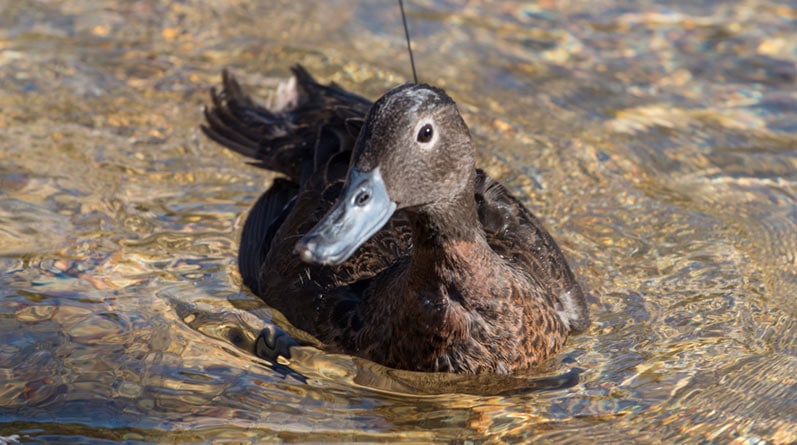
Pāteke / Brown Teal
Pāteke/brown teal are one of the rarest native waterfowl found on mainland New Zealand.
Since 2017 358 pāteke have been blessed by Manawhenua ki Mohua and Te Ātiawa and released on the lower Awapoto River at Hadfield Clearing, and at Awaroa Inlet. A small number have also been released in wetlands at Totaranui and Awaroa Lodge.
Pāteke are found in only one other South Island mainland location, the Arthur Valley in Fiordland. The Abel Tasman is now seen as a site critical for their survival.
In December 2017 there was exciting news with six ducklings spotted on a camera placed near a feeder on the river – proof the extensive predator control in the area is successful in keeping stoat and feral cat numbers down and allowing the ducks to breed.
Many of the released pāteke have transmitters and DOC rangers regularly monitor them, they have been spotted as far away as the Awaroa Lodge and Totaranui. The success of the release means further pāteke will be released over coming years.
Pāteke can be distinguished from other ducks by their white eye-ring. We need help from the public in this area to protect the birds. A single dog or cat can kill many pāteke so dogs must be kept under control and please report any sightings of cats. Also, take care driving near the Awaroa inlet.
Learn more about Pāteke
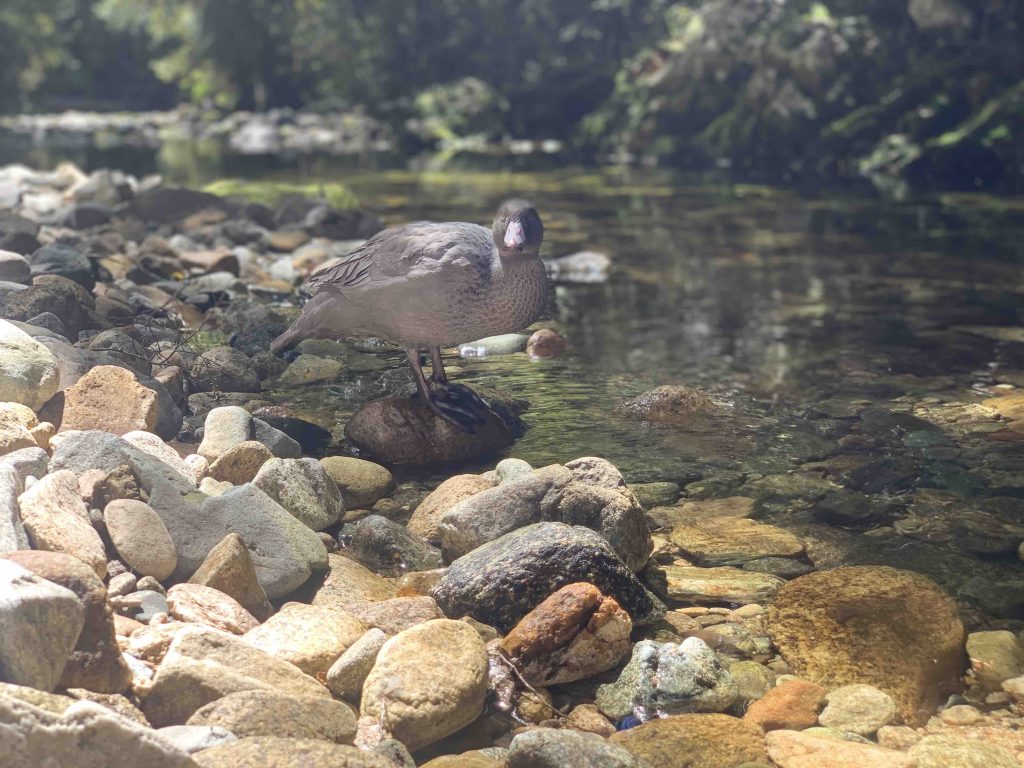
Whio / Blue duck
In 2018 the first four whio/blue ducks were released at Wainui River in the upper reaches of the park to “kick-start” what we hope will become a healthy whio population in the Abel Tasman. Since then whio have also been released into the Falls River and in tributaries of the Awaroa River.
The manu (birds) were bred at the Isaac Conservation and Wildlife Trust’s Peacock Springs captive breeding facility near Christchurch, from captive pairs sourced from the Rolling River in Kahurangi National Park. The whio were blessed by representatives of Manawhenua ki Mohua, Te Ātiawa and Ngāti Rārua before being released.
With over 90% of the Abel Tasman National Park now stoat trapped, Project Janszoon, DOC and iwi feel confident about releasing the birds in these sites.
Before releases started it was not thought there were many of the blue ducks living in the Abel Tasman. The whio will be regularly monitored and if they stay in the park we will release more, so over time, whio will once again be an integral part of the park’s ecosystem and regularly seen by the park’s many visitors.
ENDANGERED
SNAILS
The Abel Tasman is home to two species of endangered snails. Never before have they been studied so intensively with monitoring and survey results painting a rosier picture about their populations than previously thought.
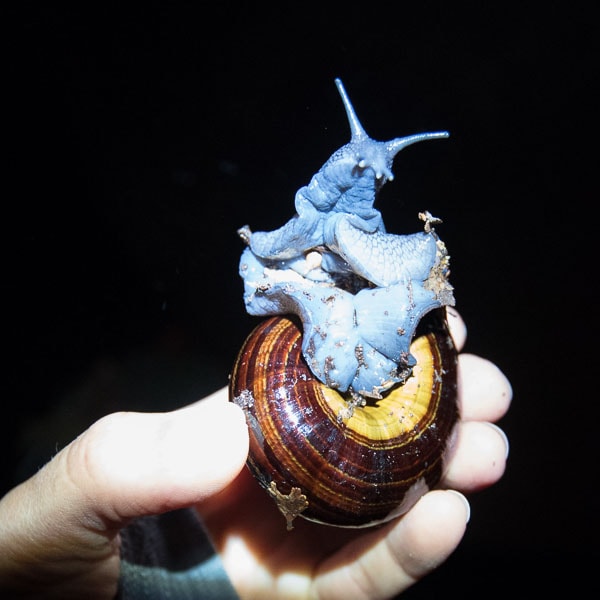
Powelliphanta Hochstetteri
This carnivorous land snail is the largest snail in the world and found in the upper reaches of the Park, Wainui Valley and Falls River catchment.
In a first for New Zealand, in the spring of 2016 Dr Brian Lloyd–assisted by Dr Ruth Bollongino–attached tiny radio transmitters to ten Powelliphanta hochstetteri snails near Canaan Downs to investigate their ranging behaviour and activity. The snails in this study were from the sub-species P.h. hochstetteri, ranked as in gradual decline. They were monitored, day and night for the next 41 days.
This is the first time snails had been radio-tracked at night in New Zealand, giving a unique insight into the carnivorous land snail’s behaviour. Results found snails are active for one or two nights and then have longer periods of inactivity, preferring to move on warm, moist nights. Unsurprisingly they don’t travel great distances, on average just 1.32m, although one did travel 3.8m.
Interestingly, the snails tended to move in a straight line with a slight left bias. None went back to the same spot, which indicates they are not territorial and don’t seem to have a home base.
The information from the snail tracking will help improve the accuracy and precision of population estimates from mark-recapture and other survey methods. Two hundred snails were also tagged and monitoring will be repeated to survey population changes over time.
Learn more about Powelliphanta hochstetteri
Rhytida Oconnori
Rhytida oconnori is the only critically endangered species found in the Abel Tasman and numbers were thought to be in decline. However monitoring by DOC and Project Janszoon in 2015 found the population is much more widespread in the Park than initially thought.
To put this in context, according to DOC biodiversity ranger Mike Ogle, if the Rhytida oconnori had feathers it would be the equivalent of a kakapo – as they are both classified nationally critical. Imagine finding you had 20 percent more kakapo than you’d previously thought? People would be popping the champagne corks!
(Photo Fred Overmars)
Learn more about Rhytida oconnori
